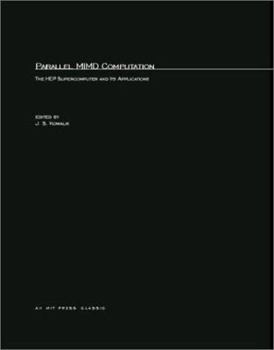Parallel MIMD Computation: HEP Supercomputer and Its Applications
(Part of the Scientific and Engineering Computation Series)
Select Format
Select Condition 
Book Overview
Fifteen original contributions from experts in high-speed computation on multi-processor architectures, concurrent programming and parallel algorithms. Experts in high-speed computation agree that the rapidly growing demand for more powerful computers can only be met by a radical change in computer architecture, a change from a single serial processor to an aggregation of many processors working in parallel. At present, our knowledge about multi-processor architectures, concurrent programming or parallel algorithms is very limited. This book discusses all three subjects in relation to the HEP supercomputer that can handle multiple instruction streams and multiple data streams (MIMD). The HEP multiprocessor is an innovative general purpose computer, easy to use by anybody familiar with FORTRAN. Following a preface by the editor, the book's fifteen original contributions are divided into four sections: The HEP Architecture and Systems Software; The HEP Performance; Programming and Languages; and Applications of the HEP Computer. An appendix describes the use of monitors in FORTRAN, providing a tutorial on the barrier, self-scheduling DO loop, and Askfor monitors. J. S. Kowalik, who has contributed a chapter with S. P. Kumar on "Parallel Algorithms for Recurrence and Tridiagonal Linear Equations," is a manager in Boeing Computer Services' Artificial Intelligence Center in Seattle.MIMD Computation is included in the Scientific Computation Series, edited by Dennis Cannon.
Format:Paperback
Language:English
ISBN:0262611899
ISBN13:9780262611893
Release Date:June 1985
Publisher:MIT Press
Length:434 Pages
Weight:2.25 lbs.
Dimensions:1.0" x 8.4" x 10.9"
Age Range:18 years and up
Grade Range:Postsecondary and higher
Customer Reviews
0 rating





